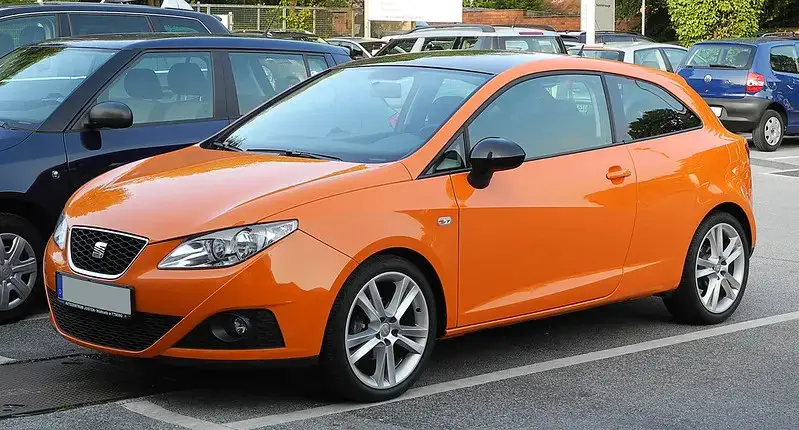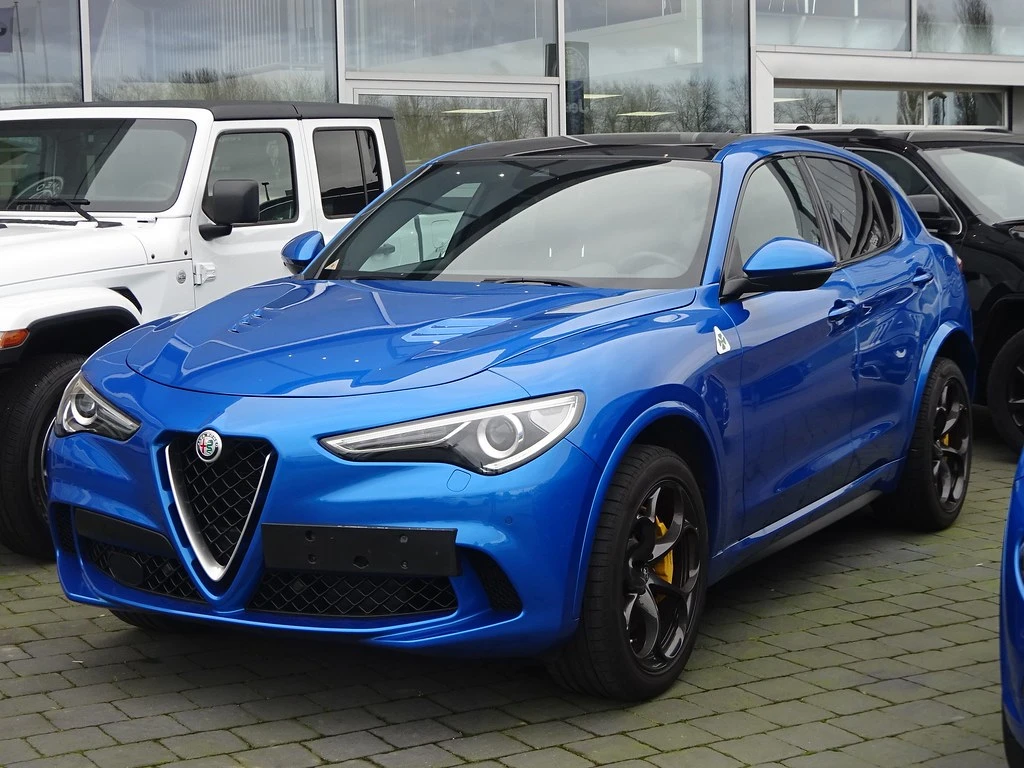Review: Seat Ibiza 6J (2008 – 2017)

The Seat Ibiza 6J, a Van Gogh in a Picasso world. The Seat Ibiza 6J, is a liquid car in a solid world. Why I like this supermini, find out in today’s review.
I could take the either the Polo 6R or Fabia II reviews and copy the info directly from there because the Seat Ibiza 6J is part of the same classic trio Ibiza – Polo – Fabia.
However, Polo and Fabia were cars on which the designers only had a ruler and a pencil. In contrast, the Seat Ibiza came with more fluid shapes than beer and remains the most attractive of the three, like a 1500 ml beer pint from the Old Town.
If you haven’t already run to the bathroom with a roll of tissues, then you should know that the Ibiza also came in the Cupra ST version. So it was the only one in the trio that had both the sport and estate versions. Essentially, a Seat Ibiza 6J Cupra ST was a kind of Golf for car enthusiasts – a relatively cheap car that could be everything you needed.
And it’s not just about the Cupra version because you had absolutely any engine available for absolutely any need and any possible body option (except for the estate). Need a car for delivering food? 3 door Seat Ibiza with a 1.4 naturally aspirated petrol engine. Need a car for a driving school? The 5-door version with the 1.0 petrol engine. Do you have a bizarre fetish for crossing the country’s roads in a car made exclusively for the city? The estate version with the 1.4 diesel.

Seat Ibiza 6J Engines
Petrol
- 1.0 MPI of 75 horsepower – The official engine that helps the VW Up! deliver hot kebabs to drunk students at night unfortunately cannot deliver performance on the Ibiza. Instead, it delivers issues with the camshaft and premature clutch wear .
- 1.0 TSI with 95 and 110 horsepower – A new engine, launched in 2015, and one that still won’t convince you. It will convince you, however, to buy oil barrels.
- 1.2 MPI BZG / CGPA of 60 and 70 horsepower – Carried over from the previous generation, this is the best kebab delivery engine to buy. Not too shabby for the urban life, not suited for B-roads and above. Oh and keep an eye on the oil level and set money aside for some coilpacks.
- 1.2 TSI CBZB of 85, 90, and 105 horsepower – Be very careful here because there are two versions of this engine. One has a timing chain, and you don’t want that, and the other has a timing belt, and that’s a perfectly decent engine for the light body of the Ibiza. VW said that they made the switch from timing chain to timing belt somewhere in 2013-2014, but it’s best to check if your Ibiza has a timing belt.
- 1.4 MPI BXW / CGG of 85 horsepower – Like potato soup, it’s a simple engine that does its job without pretensions and without high costs. You might have a race at maximum speed with a Caddy 1.9 SDI, but for the typical Ibiza driver, this engine is perfect.
- 1.4 TSI CAVF of 140, 150, and 180 horsepower – The famous 1.4 TSI with both a turbocharger and a supercharger. In the end, the entire engine compresses, and it spectacularly exits through the exhaust pipe, so avoid this miserable engine.
- 1.6 MPI BTS of 81 and 105 horsepower – The last naturally aspirated engine from the old school at VW concludes its career on the Seat Ibiza 6J. Occasionally eats coil packs and drinks oil, but at least it’s the fastest non-turbo engine on the Ibiza. A kind of champion in the “75+ years” category. Unfortunately, it was strangled and thrown in the river by emissions regulations in 2010.
- 1.8 TSI DAJA of 190 horsepower – Finally, the Ibiza Cupra. Which came with the mighty 1.8 Turbocharged petrol used by the much bigger cars from the group. I don’t know if this engine uses more petrol or oil, but atleast you got a better looking Polo GTI. Good luck finding one though.
- 2.0 MPI CEKA of 115 horsepower – Reserved for the Mexico market, the good old 2.slow sacrifices performance for reliability so if you find one, you can go for it. As with any naturally aspirated engine, you will have to occasionally top it up with fuel and coilpacks.
Diesel
- 1.2 TDI CFWA of 75 horsepower – Just as the old 1.4 TDI was a 1.9 TDI with one cylinder removed, the 1.2 TDI is a 1.6 TDI with one cylinder removed. Very good, more economical, and more reliable than the full 4-cylinder full course, all good until the EGR gets clogged and costs so much that your savings are suddenly taken away by mechanics. So don’t drive it in town. Fantastic fuel economy tho.
- 1.4 TDI BMS of 75, 90, and 105 horsepower – Just as the new 1.2 TDI is a 1.6 TDI with one cylinder removed, the 1.4 TDI is the old 1.9 TDI with one cylinder removed. Decently fast, economical, and reliable, but noisier than a hangry girlfriend complaining at the food court and not finding anything she likes to eat.
- 1.6 TDI CAYB / CAYC of 90 and 105 horsepower – Like the 1.2 TDI, this engine is excellent for long journeys but very inadequate for the city. Legend has it that the EGR gets clogged every 200 meters in the city, and the DPF every 300 meters. Like religion, this engine is often a good idea but the execution is poor.
- 1.9 TDI BXJ and BLS of 105 horsepower – The famous, renowned, universally known brainwashing 1.9 TDI is under the hood of the Ibiza 6J for only one year, from 2008 to 2009. You don’t need to be a graduate of the school of life to understand that this engine is rarer than a girl who says “yes” right away when you ask her out for coffee, in case you’re fat, ugly, and short. Intelligence-wise, find out later.
- 2.0 TDI CFHD of 143 horsepower – What was initially a mistake by an accountant who put this engine from one Excel into the Excel of the Seat Ibiza, this engine is the second most powerful engine available on the Ibiza, considering it’s a 4-cylinder diesel. The usual issues with the dual-mass flywheel that wears out faster than my patience at work shouldn’t stop you from buying this torpedo on wheels.

Seat Ibiza 6J Reliability Issues
- Rear passengers should hope they will always be best friends because the microscopic space will not allow for much moving about. When they tested the rear space, they used tardigrades as mannequins.
- Cheap and poorly installed door seals will make you feel like driving a sideways cabrio because the only difference between being inside and outside car will be the wind blowing on the outside. The noise and temperature will be the same.
- The independent and full-of-bonuses electric windows have the habit of working as they please and occasionally frying the motor. I remember owning a Polo 9n, and just like that, no matter what buttons I pressed, the windows knew better what they wanted to do.
- The front springs were bought from a gym where kangoo jumps were practiced, so be sure to check their condition on the evelator and prepare yourself spiritually, financially, and metaphysically for a replacement. Of front springs.
- No meal without fish and no VW without issues with the DSG automatic transmission. The gearbox must be checked in the morning when it’s cool, the oil and filter must be changed every 60,000 km, and you must have a picture of Peter North in the glove compartment to shield you from the Mechatronics failures, the central unit of the automatic gearbox.
- Like any car, but especially at VW and Alfa Romeo, the timing belt must be changed on time, along with the water pump. Diesel engines are especially targeted.

Seat Ibiza 6J Verdict
One of the best superminis on the used market at the moment. Yes, the interior is as equipped as a student dorm room or as Gal Gadot, but at least it’s a cheap and easy-to-drive and park. Personally, I like this car, and I think I’m going to check out the classifieds. Maybe, just maybe, I’ll get myself a car because I don’t need a license anyway.
Which engines do I recommend? Basically I recommend petrol engines because the Seat Ibiza 6J is a supermini, a city car. So, if you want a Ibiza but you can’t quite afford the running costs of the Ibiza, I recommend the excellent but outdated naturally aspirated 1.4 MPI, 85 horsepower engine. And if you can afford the running costs of the Ibiza, I recommend the excellent 1.2 TSI with a timing belt (very important). As for diesel, if you really have to get a diesel, then I stick to the old 1.4 TDI. Although that 2.0 TDI with 143 horsepower sounds way too enticing not to consider if you find one.
Similar Articles

Review : Nissan Juke F16 (2019 – present)

Review : Alfa Romeo Stelvio 949 ( 2017 – prezent )

Review : Nissan Juke F15 (2011 – 2019)
Write an answer
- Review : Nissan Juke F16 (2019 – present) 23 February 2025
- Review : Alfa Romeo Stelvio 949 ( 2017 – prezent ) 15 March 2025
- Review : Nissan Juke F15 (2011 – 2019) 23 February 2025
- April 2025
- March 2025
- February 2025
- January 2025
- December 2024
- November 2024
- October 2024
- August 2024
- July 2024
- June 2024
- May 2024
- April 2024
- March 2024
- February 2024
- January 2024
- December 2023
- November 2023
- October 2023
- September 2023
- August 2023
- July 2023
- June 2023
- May 2023
- April 2023
- March 2023
- February 2023
- January 2023
- December 2022
- November 2022
- October 2022
- September 2022
- August 2022
- July 2022
- June 2022
- May 2022
- March 2022
- April 2021
- January 2021
- December 2020
- November 2020
- October 2020
- September 2020
- August 2020
- July 2020
- March 2020